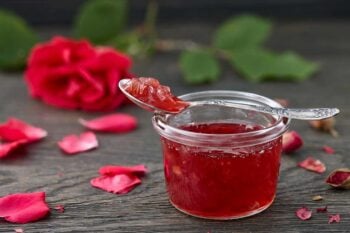In many parts of the country this week, streets and walkways are covered in snow and ice, and everyone is using salt, sand and other chemical de-icers to make their streets safe for travel. But not all de-icers are alike, and some are downright harmful to your pets, your children and your local streams and rivers.
Why Conventional Ice Melt is Bad for the Environment
Rock salt, table salt (NaCl), urea (NH2)2CO), potassium nitrate (KNO3), and even baking soda (NaHCO3) are commonly used de-icers that are cheap and do a good job of melting ice. But when the snow melts and rains fall, the chloride and nitrates in them quickly run off the streets and sidewalks where they kill soil life, grass, trees and other plants they come in contact with.
Eventually these toxic salts run off or leach into the nearest waterway where they can kill frogs, fish and other aquatic life, and pollute groundwater aquifers and wells, too.
Conventional de-icing salts are also notorious for tearing up or burning the paws of dogs and cats who walk on them, for sickening children who play in snow and ice that has been treated with them, and for causing corrosion on driveways, vehicles and roadway structures.
Increasingly cities have been using beet sugar to help melt ice. Beet sugar (or any sugar) increases the effectiveness of ice melting salt so you can use much less of it—which is great for watersheds and city budgets—but all beet sugar is genetically engineered, so its use encourages more GMO, glyphosate-resistant sugarbeets to be planted.
And more GMO sugarbeets means a lot more toxic glyphosate (Round-up) in the environment and on our dinnerplates, more soil fertility destroyed, more herbicide resistant superweeds, more genetic contamination of organic sugarbeets, beets and Swiss chard, and a greater monopoly over our seed supply by Monsanto. Yikes!
Eco Friendly Ice Melting Salt
Fortunately, it’s easy to be safe and sustainable when dealing with winter snow and ice. Instead of using conventional ice melting salt this winter, pick up some “Pet-Safe” de-icer, which is non-toxic enough to be consumed by pets who might lick it off their paws. If you can go one step further and buy “Chloride-Free” ice melt, it costs a bit more, but it is the safest for waterways and wildlife.
In addition to these labels, look for products that are specifically made from:
- Calcium magnesium acetate (CMA) (safest, but most expensive)
- Magnesium chloride (MgCl2)
- Potassium chloride (KCl)
When these de-icing products run off with the snowmelt, the calcium, magnesium or potassium they contain can actually fertilize the plants they come into contact with. Good pet-safe and chloride-free ice melt brands include:
All of these eco-friendly de-icing salts are non-toxic and non-corrosive, so they won’t harm people, pets or property. Some of these products can be applied right before a snowstorm to help prevent the build up of ice and snow.
TIP: Mix your de-icing salt with a little sugar, and it’ll work even better!
Skip the Salt
Do you really need to melt the ice, or can you just make it safe to walk on? Sand, sawdust, and kitty litter (non-clumping) are proven ways to add traction to a slippery surface for very little money and virtually no environmental harm. In fact, it’s a good idea to keep a bag of kitty litter in the trunk of your car, in case you get stuck on ice.
Lastly, here’s an easy, eco-friendly recipe to help prevent ice build-up on your car windows.

Vinegar Window De-Icer
Equipment
Ingredients
- 3 cups white vinegar
- 1 cup lukewarm water
Instructions
- Mix 3 cups of white vinegar and 1 cup of lukewarm water in a bowl or pot.
- Stir the mixture with a spoon and use a funnel to fill a spray bottle with the solution.
- Liberally spray the vinegar and water solution on to your car’s windshields, side windows and outer mirrors before you go to bed. The vinegar and water solution will help keep ice from forming on your car’s windshield overnight, even if they get covered with snow.
Recommended in This Article
This article contains affiliate links. As an Amazon Associate I earn from qualifying purchases.













22 thoughts on “Eco-Friendly Ice Melting Options”